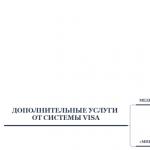Agriculture of Foreign Asia. General characteristics (presentation)
Foreign Asia includes 48 states and is divided into 5 subregions. The subregions of Overseas Asia are Southwest, South, Southeast, East and Central Asia. What are the features and geographical location of these regions?
general characteristics
The area of Overseas Asia is 32 million square meters. km. All 48 states can be divided into island, inland and coastal. Island states include, for example, Japan, the Maldives, etc., coastal states - India, South Korea, etc., inland states - Mongolia, Kyrgyzstan, etc.

Rice. 1. Table of characteristics of Foreign Asia.
Out of 48 countries, only 4 states can be called economically developed. These are Japan, Singapore, Israel, South Korea. The remaining countries belong to the group of developing countries.
The climate of Western Asia is varied. The region is located in the subtropical, equatorial (extreme south) and temperate zone (north of the region).
Western Asia is bordered by many bays, seas and oceans. Asia has access to all four oceans: in the north it is washed by the waters of the Arctic Ocean, in the east by the Pacific Ocean, in the south by the Indian Ocean, and in the west by the Red Sea, which belongs to the Atlantic Ocean.
The natural conditions of the regions are very diverse. The main natural resources are oil (Persian Gulf countries), gas (Gulf countries, Turkmenistan), coal and iron ore (China, India), non-ferrous metal ores. The region has an extremely uneven supply of mineral resources. Most countries are experiencing a shortage of land, and in South-West and Central Asia, a shortage of water resources.
Industry and Agriculture
According to the level of industrial development, there are 6 groups of countries:
TOP 4 articleswho are reading along with this
- Japan (second in the world in terms of economic potential) has a high level of industrial development. Israel is also developing rapidly.
- China and India stand out for their large production scale, but lag behind in the production of goods per share of population.
- Newly industrialized countries (NICs) (Korea, Singapore). The basis of the economy is the manufacturing industry (including mechanical engineering).
- Oil exporting countries (Saudi Arabia, Kuwait). The basis of the economy is oil production.
- Countries with initial industrialization: mining and light industry (Mongolia, Vietnam, etc.)
- Least developed countries (Laos, Cambodia, Nepal, Bhutan), where modern industry is almost absent.
Agriculture is represented by three types:
- Growing rice, tea, sugar cane, etc. (areas with a monsoon climate).
- Subtropical agriculture, which is widespread in Mediterranean countries (fruits, grapes, citrus fruits, olives, wheat).
- Growing grains, grazing livestock, common in the dry regions of Central, South, and South-West Asia.

Rice. 2. Flood fields for growing rice in China.
For all types, cotton is an important crop, largely exported.
Population of Overseas Asia
4.2 billion people live on the territory of Foreign Asia. 50% of the world's population is concentrated here. The most populous country is China, with a population of 1.4 billion people. Population density is extremely uneven: high density in coastal and island countries, low in desert countries (for example, Mongolia and Kazakhstan). The region has a very low level of urbanization.
Among the countries, the state with the highest population density is Bangladesh with its capital Dhaka.

Rice. 3. Dhaka is the capital of Bangladesh.
The composition of the population of Foreign Asia is ethnically very complex. More than 1 thousand peoples who belong to different language families live on its territory. The largest peoples are the Chinese, Japanese, Biharis, and Bengalis.
EGP of Foreign Asia
There are positive and negative aspects to the EGP of Foreign Asia. One of the positive features is the coastal location of most countries in the region. In addition, there are mineral resources here, which are diverse and form the basis for the existence of heavy and light industry. Thanks to the large amount of oil produced in Saudi Arabia, Iran, Iraq, and the UAE, Asia occupies an important place in the world economy.
There are five centers of Overseas Asia:
- China;
- Japan;
- India;
- NIS (newly industrialized countries);
- oil exporting countries).
What have we learned?
Foreign Asia is a large macro-region, which includes five sub-regions. Occupying an area of 32 million square meters. km, and with 48 states, this territory plays an important role in the global economy. This article for grade 11 geography provides brief information about the regions, their geographical location and economic characteristics.
Test on the topic
Evaluation of the report
Average rating: 4.4. Total ratings received: 422.
“Population of Foreign Asia” - Asia is characterized by a very variegated ethnic composition. Giant countries (more than 3 million sq. km) China, India. Developmental – the ability to summarize a variety of material, draw conclusions and conclusions. Level of socio-economic development. Asia translated from Assyrian means east. Foreign Asia. Models of socio-economic development.
“Resources of Central Asia” - Due to the deterioration of irrigation systems, up to 60% of irrigation water is lost before reaching the crops. At the beginning of the 21st century, the question of implementing the project was raised again. Energy potential of Central Asia. The main problems of Central Asia in the field of hydro resources. Hydropower potential of Central Asian rivers.
“Economy of Foreign Asia” - Principles of development of NIS countries. Economy of Foreign Asia. Islam. The ethnic composition of foreign Asia is highly mosaic! The Kurds are a people numbering about 20 million people. Growing role in the world economy! Ethnic composition of the Asian population. Newly industrialized countries (NICs). Field characteristics: High quality oil Low cost.
"Overseas Asia" - Least developed countries. Sharply different. Countries of Central and East Asia. Christianity Buddhism Islam. Developing countries. Population of the region. They occupy a leading position among the countries of the world. Countries of South-West and South Asia. Countries of Southeast Asia. New industrial countries. Developing super countries.
“Regions of Foreign Asia” - The deep position of some countries. Natural conditions and resources. Economic and geographical location. Political map of the region. Three main features. The coastal position of most countries. From west to east 10 thousand km. Territory. Neighborhood position of countries in relation to each other. Foreign Asia.
This development is aimed at creating an idea of the main economic centers of Asia. Economic groupings influencing the development of the Asian region are identified. The features of agriculture and the distribution of main food crops in the region are considered.
Download:
Preview:
To use presentation previews, create a Google account and log in to it: https://accounts.google.com
Slide captions:
PRESENTATION NAME Company Name Centers of economic power in Asia. Features of agriculture.
Centers of economic power in Asia. ? ? ? ? ? List the centers of economic power in the Asian region. Indicate the reasons for their selection.
ASEAN - Association of Southeast Asian Nations was founded on August 8, 1967 in Bangkok. It included Indonesia, Malaysia, Singapore, Thailand, the Philippines, then Brunei Darussalam (in 1984), Vietnam (in 1995), Laos and Myanmar (in 1997), Cambodia (in 1999). Papua New Guinea has special observer status. Goals of creation: to promote the development of socio-economic and cultural cooperation of the member countries of the organization; promoting peace and stability in Southeast Asia (SEA). The transformation of ASEAN into one of the global political and economic centers of a multipolar world has stimulated this regional grouping of countries to actively solve a number of extremely important tasks: the formation of a free trade zone and an investment zone; the introduction of a single currency and the creation of a comprehensive economic infrastructure, the formation of a special management structure.
OREC - the Organization of Oil Exporting Countries - is an international intergovernmental organization created by oil-producing countries in order to stabilize oil prices. OPEC consists of 12 countries: Iran, Iraq, Kuwait, Saudi Arabia, Venezuela, Qatar, Libya, United Arab Emirates, Algeria, Nigeria, Ecuador and Angola. The headquarters is located in Vienna.
Shanghai Cooperation Organization (SCO) The main objectives of the organization are strengthening stability and security in a wide area uniting member states, combating terrorism, separatism, extremism, drug trafficking, developing economic cooperation, energy partnership, scientific and cultural interaction.
Asia-Pacific Economic Cooperation (APEC) Australia Brunei Vietnam Hong Kong Indonesia Canada China Republic of Korea Malaysia Mexico New Zealand Papua New Guinea Peru Russia Singapore United States of America Thailand Taiwan Philippines Chile Japan Asia-Pacific Economic Cooperation (APEC) - forum of 21 economies of Asia-Pacific Pacific region for cooperation in regional trade and investment facilitation and liberalization. APEC's goal is to enhance economic growth and prosperity in the region and strengthen the Asia-Pacific community. Asia-Pacific Economic Cooperation APEC includes: Australia Brunei Vietnam Hong Kong Indonesia Canada China Republic of Korea Malaysia Mexico New Zealand Papua New Guinea Peru Russia Singapore United States of America Thailand Taiwan Philippines Chile Japan
List the features of agriculture in Overseas Asia.
Features of agriculture in Foreign Asia: The bulk of the active population is in agriculture. Combination of product + consumer. Predominance of food crops. In many countries there is a food problem.
List the centers: Rice sowing; Tea growing; Subtropical agriculture Pasture farming.
“Singapore - Asia in miniature”, “Brunei: the nature of wealth and poverty”, “Korea - one people, two countries”, “Japanese - Eastern mentality. How it is formed, how it affects the economic characteristics of the country" Abstract topics
Homework: Topic 7, paragraph 1, points 4,5,6. Working on an abstract
On the topic: methodological developments, presentations and notes
Project "Mathematics and Agriculture"
Project goals: Find facts that convince us of the huge role of mathematics in agriculture, make sure that there are people devoted to the earth, select interesting data for drawing up agricultural problems...
Development of a lesson for grade 10 on the topic "Agriculture of the world." The features of agriculture in economically developed and developing countries are considered....
TOPIC of the extracurricular event: “Features of agricultural development in Kuban.”
The purpose of the event: to familiarize students with the features of agriculture in the Kuban and the prospects for its development, to cultivate a caring attitude towards the natural resources of their native land. W...
Development of a lesson on the topic “Agriculture and recreational management of the Krasnodar Territory” in 9th grade, textbook by N.N. Petrova, N.A. Maksimova, publishing house “Mnemosyna”. Section "Regions of Russia", topic "With...


GNP is the gross national product. Investments of foreign companies, their income exported abroad, wages of foreign workers not taken into account when calculating GDP (GNP is low in Singapore, South Korea, Taiwan and Malaysia) GNP is the gross national product. Investments of foreign companies, their income exported abroad, wages of foreign workers not taken into account when calculating GDP (GNP is low in Singapore, South Korea, Taiwan and Malaysia)





Developing countries Least developed countries Mongolia, Vietnam, Bangladesh, Afghanistan, Sri Lanka, Jordan. Laos, Cambodia, Nepal, Bhutan, Yemen MGRT act as suppliers of mineral raw materials. There is practically no modern industry. Industry specialization: mining or light and food industries.

Developing super countries China and India have achieved great success in economic and social development, but in terms of per capita indicators they lag far behind economically developed countries. Industry specialization: diversified industrial structure with a predominance of heavy industry.

New industrial countries Singapore, Taiwan, South Korea, Thailand, Malaysia, Hong Kong. As a result of the restructuring of their economy according to the Japanese model, they made a rapid economic leap Industry specialization: petrochemical, automobile-shipbuilding, electronics, light industry








